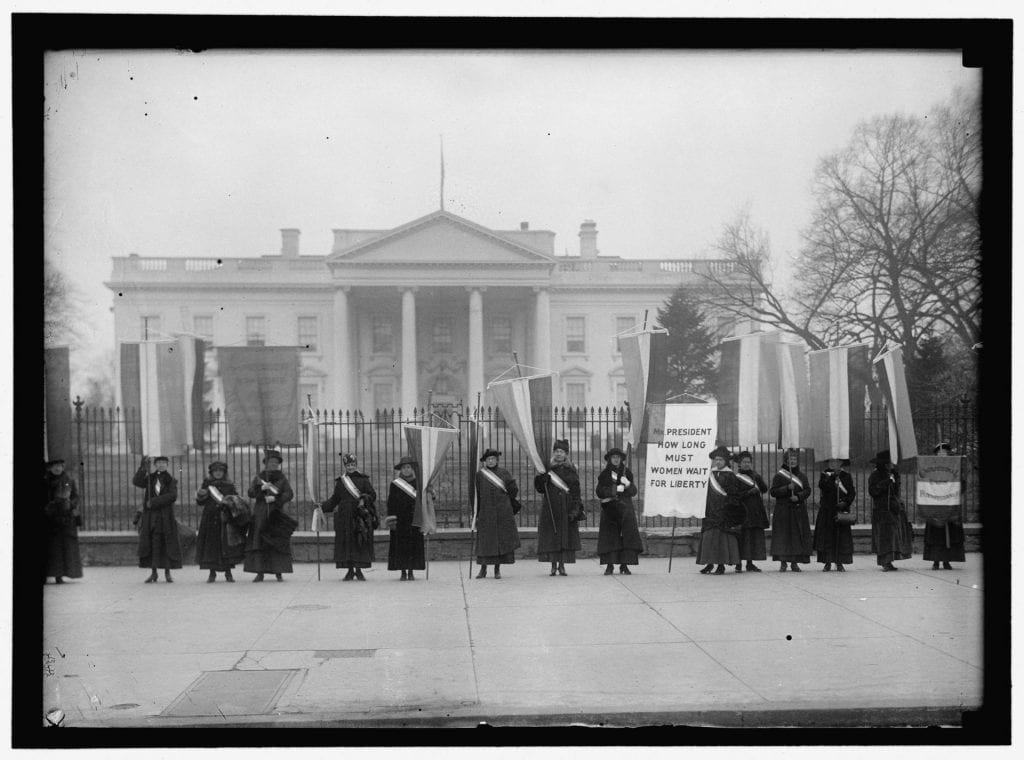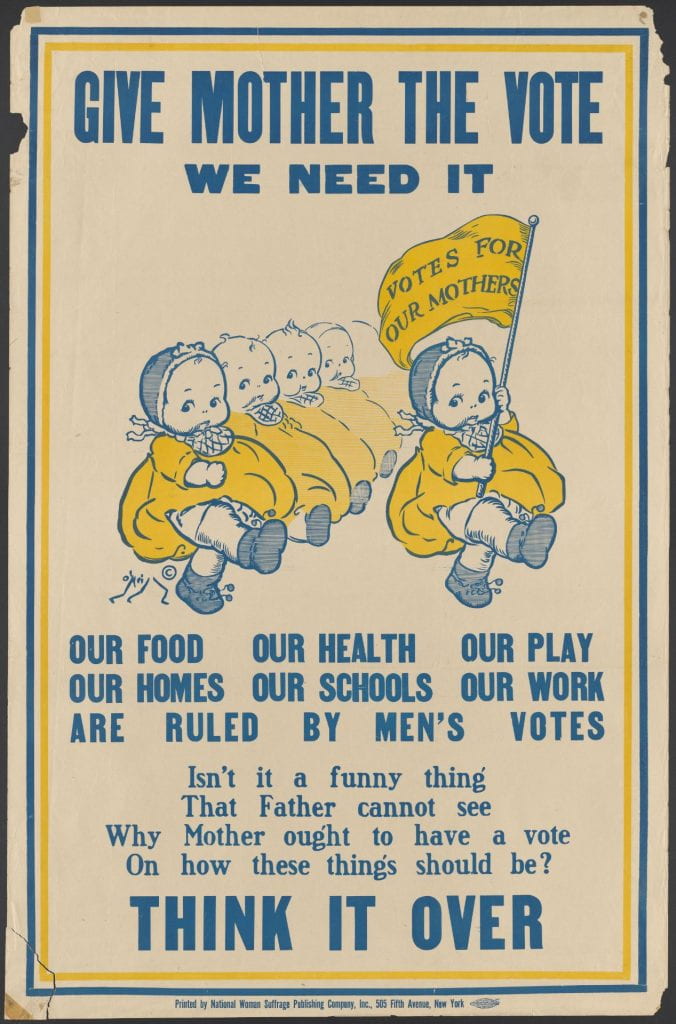 Allison Lange has firmly established herself nationally as a leading expert on the subject of women’s movements. She appeared in the New York Times, Time Magazine and Chronicle of Higher Education in the last year, and curated exhibits for the Massachusetts Historical Society and Harvard’s Schlesinger Library. Her new book, Picturing Political Power: Images in the Women’s Suffrage Movement was published in May.
Allison Lange has firmly established herself nationally as a leading expert on the subject of women’s movements. She appeared in the New York Times, Time Magazine and Chronicle of Higher Education in the last year, and curated exhibits for the Massachusetts Historical Society and Harvard’s Schlesinger Library. Her new book, Picturing Political Power: Images in the Women’s Suffrage Movement was published in May.
Suffragettes—women who seek the right to vote and run for office—have long interested Lange and she believes their message and historical teachings are as relevant today as they were 100 years ago.
Teaching within Wentworth’s Department of Humanities and Social Sciences, the assistant professor conveys that women are still fighting for many rights, including within the United States.
***
1)
Wentworth: When did the suffrage movement begin to interest you?
Allison Lange: A graduate class on American women’s history sparked my interest in women’s activism. The movement for suffrage—once a popular term meaning the right to vote—was just one of many women’s movements, but it spanned nearly a century. A photograph of suffragists picketing the White House in 1917 drew me to my book topic. In the 21st century, we regularly encounter protestors outside of the White House, but suffragists were the first ever group to do it. I wanted to learn more about these women and their bold actions. Why did they hire professional photographers to stage this photograph and send it to newspapers? My research inquiry led me to realize that they developed one of the first modern visual campaigns. They had to challenge expectations that women were only fit to stay at home and care for their families.
2)
W: Why is the subject especially relevant in 2020?
AL: This year is the 100th anniversary of the 19th Amendment, which prohibited voter discrimination based on sex. Plus, it’s a presidential election year, and everyone’s vote matters.

The image of suffragettes picketing at the White House in 1917 that drew Lange to her book subject
3)
W: What attracted you to teaching at Wentworth?
AL: I enjoy working with students on hands-on projects, which Wentworth prioritizes. Last year, an EPIC grant funded work with my classes to produce short documentary videos on women’s suffrage activism in Massachusetts.
The Massachusetts Historical Society, one of our Fenway neighbors, showed the videos as part of an exhibition. We had a lot of fun, and learned a lot, during the process. I strive to make history engaging and help students see the ways that history has shaped the present.

The National American Woman Suffrage Association began a postcard campaign in 1910, partly to raise awareness of the cause and partly as a fundraiser. The above card was printed in 1915.
4)
W: You’ve taught many classes, delivered lectures across the country and talked with some of the biggest journalists around. Who has inspired you along the way?
AL: Our students bring fascinating perspectives to my classes, and I enjoy looking at familiar topics through their eyes. For example, my students are surprised to learn that Alice Paul and fellow suffragists were arrested, sentenced to imprisonment in a workhouse, went on a hunger strike and endured force feeding to win the vote! They also cannot believe that women fought against having the vote. Their interest and curiosity refreshes my own.
5)
W: What do you hope people take away from your teachings and books?
AL: The vote is an important form of power, which is why we still debate who should have access to the ballot today. Women lobbied, picketed, traveled the country to deliver lectures, marched and launched one of the first modern visual campaigns to win the vote. Let’s celebrate the work they did and make our own voices heard.
–Greg Abazorius

